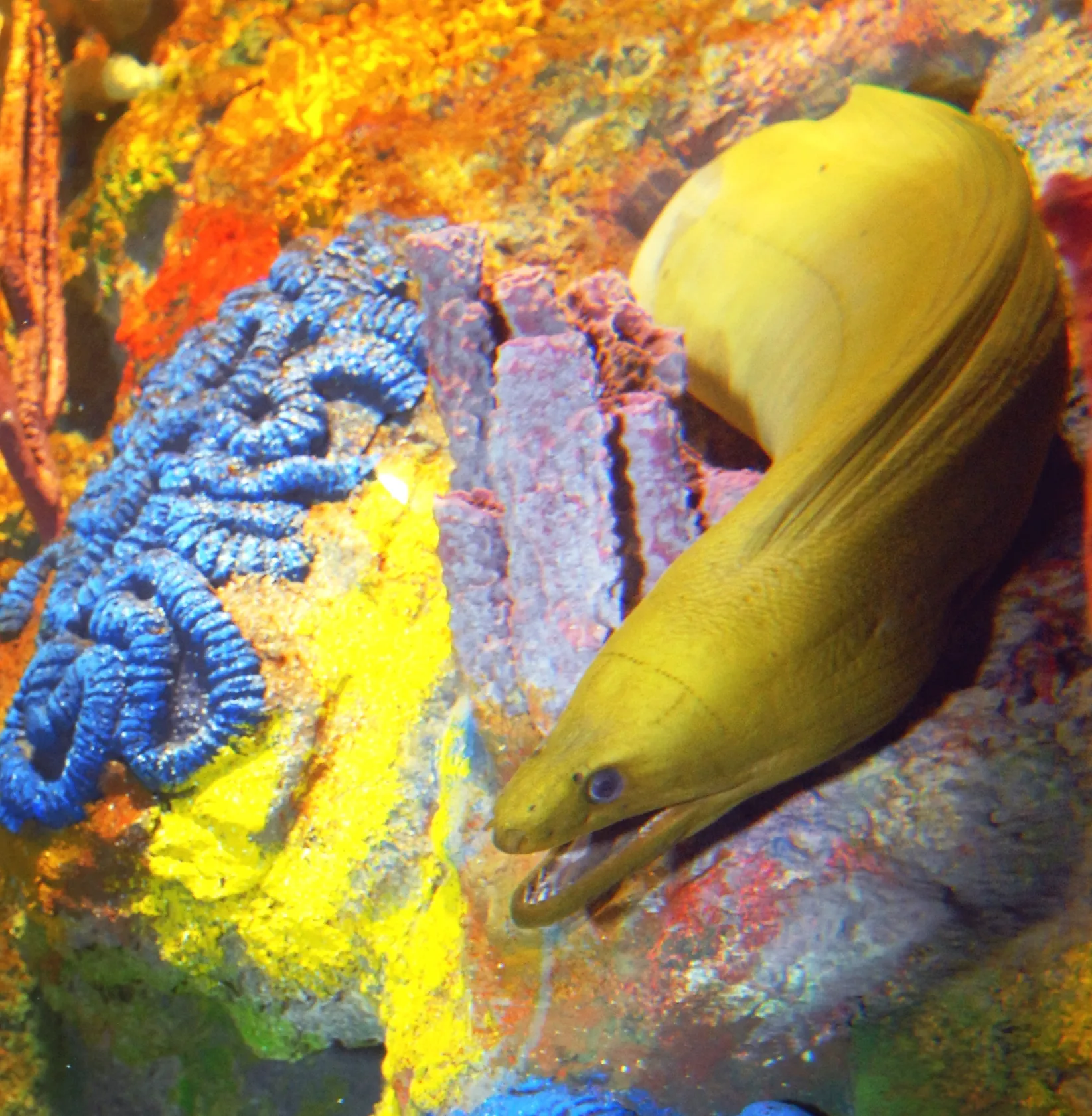-
Menu
- Plan Your Visit
- Meet The Animals
- Check Out Events
- Memberships
- About The Zoo
- Support the Zoo
- Conservation
- Education
- Groups & Private Events
- Zoo News
- Contact
- Indianapolis Prize
- Global Center for Species Survival
- Schedule
- Donate
- Membership
- Tickets

- Plan Your Visit
- Meet The Animals
- Check Out Events
- Memberships
- About The Zoo
- Support the Zoo
- Conservation
- Education
- Groups & Private Events
- Zoo News
- Contact
- Indianapolis Prize
- Global Center for Species Survival

Eels
About
Eels can be nocturnal and solitary, so it’s hard to understand their lifestyles in the wild very well! They take shelter during the day in underwater holes or crevices, then come out to forage for prey. They have multiple rows of teeth in a hinged, double jaw that is well adapted for catching and swallowing prey. Females lay eggs in large batches, which are fertilized by males. Eggs hatch into larvae before becoming adults.
Eels are a top predator in the ocean. They eat small animals that in turn eat algae. Algae and other microscopic marine life make toxins that can really add up when enough of them make it into an eel’s body. Some people eat eels as food, but they can make other people feel sick! Their bite can be toxic, too. Be sure and give wildlife the space they need to thrive.

Conservation
Eels such as the green moray and spotted moray are thriving, but some other marine species face threats from overfishing. You can help protect ocean wildlife by choosing sustainable seafood. The Seafood Watch program can teach you how!
WHERE ARE THEY AT THE ZOO?


Green moray eel (Gymnothorax funebris)
Yellow mucus over their brown body gives them a green color.
IUCN Red List status: Least Concern

Spotted moray eel (Gymnothorax moringa)
Light color with dark overlapping spots.
IUCN Red List status: Least Concern
